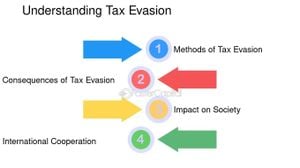Recent research conducted at Fujian Medical University Union Hospital delves deep inside the genetic dynamics of herpes zoster, exploring how specific gene expressions might correlate with disease prognosis. The investigation centers around the m7G (7-methylguanosine) modification, which has emerged as a significant player in various human diseases, including viral infections like herpes zoster, commonly known as shingles.
Herpes zoster results from the reactivation of the varicella-zoster virus (VZV), which typically lies dormant after causing chickenpox. This virus can reactivate, causing painful rashes and serious complications—especially among older adults. With the growing incidence of herpes zoster and its complex relationship with immune status, especially post-COVID-19 vaccinations, researchers aimed to clarify the interplay between m7G-related genes and immune responses.
The study revealed three key genes—NSUN2, AGO2, and SNUPN—with differential expression levels between herpes zoster patients and healthy controls. While NSUN2 exhibited increased expression, both AGO2 and SNUPN were significantly reduced among herpes zoster patients. This intriguing interaction suggests varied immune responses depending on gene expression levels, with NSUN2 positively correlated with immature B cell infiltration and AGO2 and SNUPN showing negative correlations with certain immune cell types.
A nomogram model was developed based on these findings which utilized the expression levels of these three genes to predict the risk of herpes zoster. The model underwent rigorous validation, showcasing high accuracy. The authors noted, "A nomogram model based on NSUN2, AGO2, and SNUPN can predict the risk of herpes zoster, and the relationship between these genes and immune infiltration may influence the prognosis of herpes zoster." This model presents exciting prospects for clinical assessments, potentially guiding interventions for susceptible populations.
Analyzing the background of herpes zoster’s incidence, particularly among the elderly, elevates the relevance of this study. Statistics indicate the incidence of herpes zoster can reach up to 11.69 cases per 1,000 person-years among those over 60. Excessive immune response due to factors like immunosuppression can lead to the reactivation of VZV, making it imperative to understand the underlying genetic mechanisms at play.
To categorize patients effectively, the researchers employed consensus clustering techniques, which highlighted two distinct patient subtypes based on m7G gene expression profiles. The first group displayed greater amounts of immune cell infiltrates compared to the second, indicating differing disease severities and immune responses likely influenced by m7G gene expression.
Functional enrichment analyses indicated multiple pathways influenced by these genes, particularly those related to oxidative phosphorylation and viral infections. The insights gleaned suggest pivotal roles for m7G modifications, not only as biomarkers for herpes zoster risk but also as potential therapeutic targets.
Nonetheless, the authors acknowledged limitations, emphasizing the necessity for larger, multicenter studies to confirm these findings and elucidate the underlying mechanisms of m7G modifications within herpes zoster patients. Future research could explore the predictive power of gene expression concerning symptom severity, outbreak frequency, and overall disease phenotypes.
The exploration of m7G gene expression opens new avenues for risk assessment and targeted treatment strategies for herpes zoster patients. This foundational study paves the way for future investigations, demonstrating the promising intersection of genetics and viral disease management.



